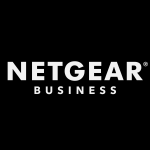Managing our data centre network was a challenge. It was designed 15 years ago, before the internet, and not very flexible. If the users had asked us to create a new system we might have had to say no because we didn’t have the space and the bandwidth.
With two networks – one for administration and one for students – to manage, we were certain the old data centre would not serve users’ needs into the future: it had no room for expansion. It was difficult to install new equipment because of the huge amount of cable. We needed a data centre to give us space and where it would be easy to add and remove equipment. The administration had become increasingly dependent on IT services for carrying out its duties. As e-administration capabilities expanded, ensuring delivery of the systems demanded by its seven independent departments was becoming even more crucial. Everything is done electronically today.
Our network supports more than 400 applications, ranging from internal systems for supporting healthcare for the elderly and handicapped to public-facing, self-service applications for the municipality’s 203,000 citizens.
We chose the HP 3800 switches for a number of reasons: we needed a real stack environment, it is a high density switch with 48 1 Gb ports and four 10 Gb ports, it has dual power supply for redundancy, and it has a lifetime warranty. The lifetime warranty is important to us. If a device breaks and is no longer available, HP provides a similar device – a newer version.
At the network’s edge are more than 1,000 devices in 800 different buildings, connected using HP 2600 Series Switches and HP 3500 Series Switches. HP 5400 Series Switches connect 30 backbone devices. HP ProCurve MultiService Mobility Access Points are installed throughout the network to give easy network access to laptops, tablets and smartphones.
We have been working with HP products for the past 15 years. We needed to do this installation quickly and working with products we trusted and knew inside out really helped. There was just no reason to start again with a new vendor. Network deployment took just six weeks. We have helped beta-test HP ProCurve Manager Plus for the past 5 years.
The whole design creates redundancy, it is a showcase of the right way to do it. The HP 3800 switches not only have the flexibility of a stackable form factor, they have 10 Gb expandability to support bandwidth-intensive applications, providing investment protection for future needs. The flexibility we have is a huge benefit. We now have a system that can cope with future demands and can create new systems demanded by the users. It is much more flexible when you have to add more equipment: we no longer have to pull new cables because they are already installed in the racks. You just have to add the new equipment, put the network connections into the network switches and it just runs the way it should.
When you have 10 Gb links it is easier to add extra VLANs and now we have the option to use 10 Gb everywhere – a huge difference to the 1 Gb links we had previously. The 10 Gb fibre is key to making our network design work. Currently we have 450 km of fibre installed across our municipality. It is now easier to find your way around the network, improving network monitoring significantly. The way it is structured now, monitoring is easier. All the racks are designed the same so it’s much easier to find your way around. All the devices have a unique naming structure and unique address, and all the ports on the switches are designed for a specific purpose – so you know where things are.
Even when a stackable switch is operated with other units, there is only ever a single management interface for the network administrator to deal with. This simplifies the setup and operation of the network. You only have to manage 1 switch for each stack, meaning I only have to manage 5 switches instead of the 24 I would have had to manage previously.
The system is more responsive for the users and we now have a system that can cope with future demands: now that we have the space and the bandwidth we need, we have the ability to create the new systems that the users want.
Disclosure: PeerSpot has made contact with the reviewer to validate that the person is a real user. The information in the posting is based upon a vendor-supplied case study, but the reviewer has confirmed the content's accuracy.














